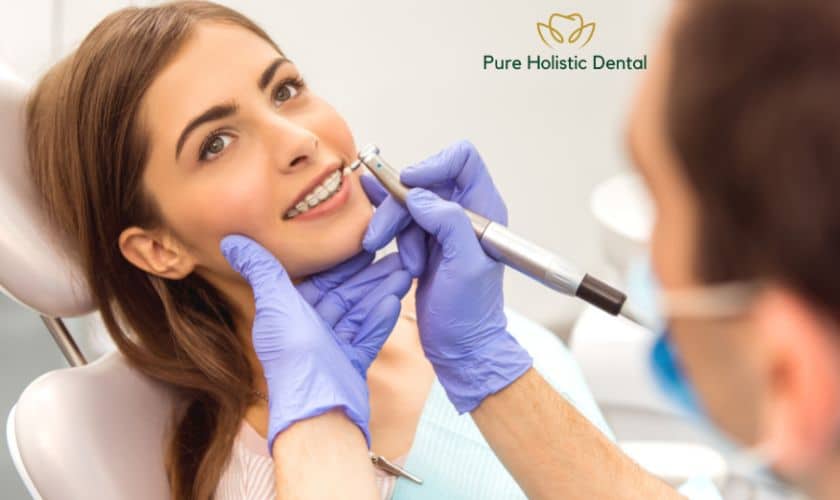Biomimetic dentistry is a field of dentistry that aims to replicate the natural structure and function of teeth using advanced materials and techniques. This approach to dentistry has several benefits over traditional methods, including improved durability, increased aesthetics, and reduced tooth loss.
One of the main benefits of biomimetic dentistry is its ability to improve the durability of dental restorations. Traditional dental restorations, such as amalgam fillings and crowns, are often made of materials that are not as strong as natural tooth structures. This can lead to a higher risk of failure over time, as the restoration may chip or break. Biomimetic dentistry, on the other hand, uses advanced materials, such as ceramic and composite resins, that are much more similar in strength and toughness to the natural tooth structure. This means that biomimetic restorations are less likely to fail and can last much longer than traditional restorations.
Another benefit of biomimetic dentistry is its ability to improve the aesthetics of dental restorations. Traditional dental restorations, such as metal fillings and crowns, can be unsightly and can detract from the natural beauty of a person’s smile. Biomimetic dentistry, on the other hand, uses materials that are more similar in color and translucency to the natural tooth structure. This means that biomimetic restorations are much more difficult to detect and can blend seamlessly into the surrounding tooth structure.
In addition, biomimetic dentistry can help to reduce tooth loss. Traditional dental restorations, such as crowns, can remove a significant amount of healthy tooth structure in order to accommodate the restoration. This can lead to weaker teeth that are more susceptible to failure. Biomimetic dentistry, on the other hand, aims to preserve as much natural tooth structure as possible. By using advanced materials and techniques, biomimetic dentists are able to create restorations that fit snugly around the remaining tooth structure rather than removing it. This helps to keep teeth stronger and healthier for longer.
Another benefit of biomimetic dentistry is its ability to use tooth-colored filling materials that match the color of the natural tooth. This makes the filling almost invisible and much more aesthetically pleasing than the traditional amalgam fillings, which are silver in color.
Another benefit of biomimetic dentistry is its ability to use adhesive techniques, which bond the filling or inlay/onlay to the tooth, rather than relying on mechanical retention such as grooves, pins, or cement. This allows for more conservative preparation of the tooth and less removal of healthy tooth structure.
Finally, biomimetic dentistry can also help to reduce the risk of tooth sensitivity. Traditional dental restorations can cause tooth sensitivity by disrupting the natural flow of fluids through the tooth. Biomimetic restorations, on the other hand, are designed to mimic the natural structure and function of teeth, which means that they are less likely to disrupt the flow of fluids and cause sensitivity.
In conclusion, biomimetic dentistry is a cutting-edge field of dentistry that offers several benefits over traditional methods. By using advanced materials and techniques, biomimetic dentists are able to create restorations that are stronger, more aesthetically pleasing, and less likely to cause tooth loss or sensitivity. If you are considering a dental restoration, it is worth discussing the option of biomimetic dentistry with your dentist to see if it may be the best choice for you.



